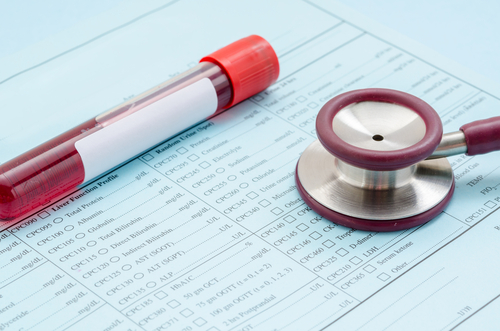Researchers Describe Rare Case of Leukemia Patient Developing Acquired Angioedema

In rare cases, patients with autoimmune diseases or immune cell proliferation may experience deficiencies in C1 esterase inhibitor and develop acquired angioedema.
Researchers at the Reading Hospital in Pennsylvania and Mayo Clinic Hospital in Minnesota have described the case of a leukemia patient who developed acquired angioedema, manifesting as recurrent episodes of abdominal pain and swelling.
Their study, “Refractory Abdominal Pain in a Patient with Chronic Lymphocytic Leukemia: Be Wary of Acquired Angioedema due to C1 Esterase Inhibitor Deficiency,” was published in the journal Case Reports in Hematology.
The patient, a 62-year-old man, came to the emergency room after having persistent abdominal pain and symmetrical swelling of the lips for two months. This was his third visit to the emergency room in six weeks because of abdominal pain.
The patient had no difficulty swallowing or breathing, and no previous history of angioedema or allergies. Also, he had not started any new medications.
In his first visit, the patient showed bowel abnormalities – diffuse small bowel thickening with mild alterations to the surrounding fat tissues – in a computer tomography (CT) scan. However, stool analysis returned positive for Clostridium difficile bacteria, suggesting an inflammatory response to infection (colitis).
But the patient continued to complain of abdominal pain, coming into the emergency room a second time with additional skin swelling and pain in his lower limbs.
A new abdominal CT scan revealed severe swelling of the mid-section of the small intestine, new bowel inflammation, and enlargement of the abdominal lymph nodes.
Another stool analysis again confirm the presence of C. difficile bacteria, for which he was treated with Vancocin (vancomycin). Lymph node and bone marrow biopsies, however, supported a new diagnosis of chronic lymphocytic leukemia (CLL).
The patient was still complaining of abdominal pain, and came to the hospital a third time with swelling of the lips. This time, stool analysis was negative for any bacteria infection, blood tests were normal and there were no signs of inflammation.
Because there was no evidence of other possible diagnosis, researchers hypothesized the patient had acquired angioedema. They analyzed the levels of functional C1 esterase inhibitor (C1-INH), a natural regulator of bradykinin that often is mutated in hereditary angioedema.
C1-INH levels were at 4 percent, which is about 10 times lower than the normal values. This led to a diagnosis of acquired angioedema due to C1 esterase inhibitor deficiency (C1INH-AAE).
After receiving C1 esterase replacement therapy and Firazyr (icatibant) to block the activity of bradykinin, the patient had no further episodes of abdominal pain, lip or lower extremity swelling. For his leukemia diagnosis, the patient received Rituxan (rituximab) plus standard chemotherapy.
C1INH-AAE is a very rare disorder that affects only between 1 in 100,000 to 500,000 patients, “although it may be higher as the condition is commonly unrecognized,” the researchers said.
It commonly manifests with edema of the skin of the face, lips, and limbs. However, in some cases it may be associated with nonspecific, colicky abdominal pain, vomiting, diarrhea, and abdominal distension, which can be easily mistaken for other gastrointestinal disorders.
“Because the diagnosis is extremely uncommon and its symptoms are protean [variable], there is frequently a delay in diagnosis,” the researchers said.
It is not clear what triggers C1INH-AAE, but an association with autoimmune diseases and immune cell proliferation has been suggested. In this case, the patient had CLL which is a lymphoproliferative disease.
In conclusion, the researchers suggested that “physicians caring for patients with unexplained abdominal pain especially with concomitant skin, lip, or airway swelling should consider angioedema as a possibility and should check laboratory testing for confirmation.”






